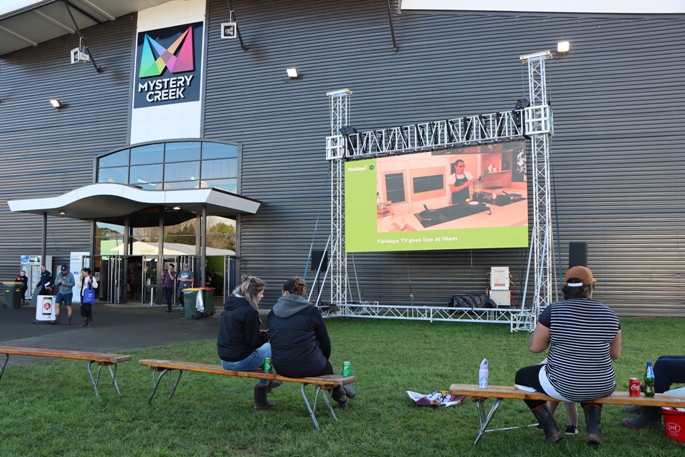When the feet of Fieldays attendees couldn’t walk any longer, they could rest up at the Village Green and watch Fieldays TV.
The series was livestreamed online during Fieldays week, so people could also tune in from home.
The Fieldays TV lineup included cooking demonstrations by chefs including Ben Bayly and Simon Gault, as well as episodes about people in their daily lives working in the primary sector, like senior leading hand for Llewellyn Horticulture and Ahuwhenua Young Maori Grower winner 2020, Maatutaera Akonga.
A panel filmed live at Fieldays, hosted by Te Radar and guests, covered a wide variety of issues facing the sector.
Dirty secrets
On a panel about Food Equity, Dirt Road Comms and Open Farms founder Daniel Eb shared his insights on the topic, which he is completing his Nuffield Scholarship on.
He believes addressing food inequality through the agriculture lens can solve “three of the big issues”: eroding social license, adding value to food and fibre exports and the need to recruit new farmers.
“Your average Kiwi mum knows that agriculture makes a lot of money, but her main priority and problem is accessing healthy whole food for her kids,” says Daniel.
“When we choose to redesign our food system around her needs, rather than things like increasing production, that’s when we regain social license.
“If we are going to tell this healthy, sustainable story, with this dirty little secret that one in five Kiwis live in food insecurity, or that we are the third most obese nation in the world, as a marketer I can tell you that story is going to fall flat.”
Another panel discussed the future of wool, at a time of low demand and poor prices.
Third generation Hawke’s Bay sheep farmer and wool campaigner Tom O’Sullivan says in the 1953 wool boom, wool was so valuable his father and his brothers would collect it off the fences.
“Every pound of wool was worth a pound,” says Tom.
In 2019, the cost to shear the sheep was more than the total year’s revenue for their strong wool by about $6000. By 2020, that $6000 turned into just under $30,000.
“It is an absolute crisis,” says Tom.
Saved by innovation?
The panel discussed that the high cost of wool may be an issue, but agreed that the fashion conversation turning towards sustainability may help its comeback.
Innovations may also hold the key to boosting demand – the discussion took place behind the world’s first woollen kayak, made here in New Zealand using wool pellets that can be used in place of polymer and other plastics.
“We’re still doing the first prototypes,” says Shear Edge founder Logan Williams, who make
the pellets. “It’s very exciting.”



0 Comments
Leave a Comment